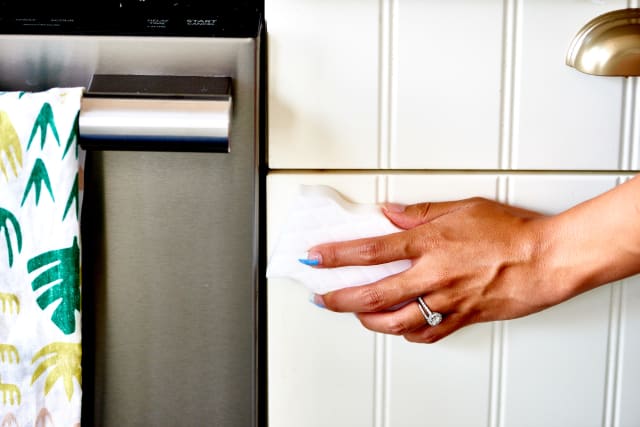http://chriskresser.com/

Keep reading for my take on the topic and find out which sweetener may be the best choice for you.
What Is Sorbitol?
Sorbitol is a sugar alcohol. Like xylitol and erythritol, sorbitol is a popular, low-calorie stand-in for refined sugar.
Sorbitol, artificial sweeteners, and refined sugar: what’s the difference? If you’re feeling confused about low-calorie sweeteners, you’re not alone. Check out this post to find out more about sorbitol, whether it’s safe to eat, and if it can fit into a healthy diet.
Sugar alcohols are low-digestible carbohydrates. Because our bodies are able to absorb them to some extent, they don’t usually qualify as calorie-free. That absorption rate varies among xylitol, sorbitol, and erythritol. Almost 80 percent of sorbitol you consume will be absorbed, compared to 50 percent of xylitol. (1) Erythritol has an absorption rate of almost 100 percent, but our bodies can’t digest it. Because of that, it offers almost no calories. (2)
What You Need to Know about Sugar Alcohols, Sugar, and Artificial Sweeteners
When it comes to sugar alcohol versus sugar, there are some major differences. There is little data suggesting that sugar alcohols present health risks, but many studies have linked the consumption of refined sugar to long-term, negative health issues, including:
- Weight gain, especially when refined sugar is consumed in liquid form (i.e., sweetened beverages) (3)
- Reduced immune system efficiency (4, 5)
- Disorders such as binge eating and even sugar addiction (6)
Artificial sweeteners also carry some potential health risks. These sugar substitutes are often used to satisfy a craving for a sweet taste without adding extra calories. The FDA currently recognizes six artificial sweeteners as safe: (7)
- Sucralose
- Aspartame
- Acesulfame potassium (Ace-K)
- Neotame
- Advantame
- Saccharin
There is some evidence that consuming artificial sweeteners such as those could wreak havoc on your gut. This is because non-caloric artificial sweeteners like saccharin, aspartame, and sucralose often pass through the gastrointestinal system without being digested. That allows them to come in contact with the colon microbiota, potentially upsetting the balance of gut flora which, in turn, can damage gut health.
On the other hand, there’s not much existing data to support concern over sugar alcohols. In fact, few toxicity studies have been conducted on these substances, and researchers generally consider them safe to eat. (8) In one study, participants shunned other sweeteners in favor of xylitol for two years. While researchers saw some temporary digestive distress in the first few months of the study, the participants didn’t show any other negative effects. (9)
Are Sugar Alcohols Healthy for You to Eat?
Sugar alcohols might actually offer health benefits for certain people. For starters, they don’t have many calories, making them a great choice for anyone trying to lose weight. Also, they each have a low glycemic index, which could be beneficial for those with diabetes.
In general, we don’t see much change in blood glucose or insulin levels when humans eat sugar alcohols. In some animal studies, researchers found that rats fed xylitol actually:
It’s important to note that these studies looked at xylitol. It will be interesting to see if future research on other sugar alcohols yields similar findings.
If You Have Digestive Issues, Steer Clear
One major drawback to sugar alcohols is their ability to disrupt the gut. Sugar alcohols are also known as “polyols”—the same polyols that make up the “P” in “FODMAP.” That means that anyone following the low-FODMAP diet won’t be able to tolerate sorbitol.
Because our bodies don’t really digest sugar alcohols, these substances can pull extra water into the large bowel and cause diarrhea. The fermentation process that takes place in the gut can also lead to bloating, gas, and poor fat absorption. (13)
How to Gauge Your Tolerance for Sugar Alcohols
Tolerance of sugar alcohol varies based on which substance is consumed. In one study, researchers found that participants could eat around 30 grams of sorbitol daily without experiencing digestive problems, but they had a much harder time incorporating xylitol into their diets without digestive issues. (14) Erythritol may be the easiest sugar alcohol to handle. (15)
If you’ve ever felt digestive upset after eating xylitol, switching to sorbitol or erythritol could solve the problem. If you aren’t sure how well you’ll tolerate a certain sweetener, I encourage you to experiment with different options. However, people suffering from irritable bowel syndrome (IBS) or another GI condition should avoid eating sugar alcohols altogether.
Which Sweetener Is the Best Choice for You?
Because I’m a strong believer in the 80/20 rule, I don’t believe you need to completely eliminate sweeteners from your diet. Even if you’re trying to stick with the Paleo diet, it’s important to understand that improving your health doesn’t mean sacrificing all of the foods that bring you pleasure.
What to Do If You’re Diabetic
For those who are insulin resistant or diabetic, it’s crucial to avoid concentrated sweeteners as much as possible. That means staying away from refined sugar and artificial sweeteners.
If you fall into this category, testing with a glucometer can help you determine how well you can handle the sugar levels naturally present in whole fruit, a healthy way to satisfy a desire for something sweet. While getting sugar from vitamin-packed, fiber-rich whole fruit is usually the most nutritious choice, foods sweetened with stevia or sugar alcohols are another alternative.
Stevia is a natural sweetener that has shown some therapeutic effects for people with diabetes. (16) And, as I mentioned, sugar alcohols may also offer health benefits.
If You Need to Lose Weight, Follow This Tip
Consuming sugary foods or drinks can lead to overeating and weight gain. That’s why I encourage anyone who is trying to lose weight to stay away from sweetened foods and beverages (including fruit juice and “healthy” juice drinks).
Even low-calorie artificial sweeteners can harm your ability to regulate your appetite. While it’s possible that sugar alcohols may not cause this type of metabolic confusion at the same rate as refined sugar and artificial sweeteners, many people are better off choosing whole fruit (not juice, due to its much higher concentration of fruit sugars) to satisfy their sweet cravings.
If You Have Digestive Issues, Try This Sweetener
As I discussed earlier, sugar alcohols are a potent FODMAP. In fact, people with reflux, IBS, or other digestive conditions will probably have trouble digesting any concentrated sweetener. Sugar also feeds and sustains certain gut bacteria, which would spell trouble for anyone suffering from small intestinal bacterial overgrowth (SIBO). That’s why bloating and gas often follow sweetener consumption.
If you have existing digestive problems, learn to listen closely to your body to find a sweetener you can tolerate. While it’s likely you won’t be able to handle large quantities of any sweet substance, raw honey may be your best choice. Among other things, this natural sweetener has been shown to:
- Lower LDL cholesterol (17)
- Reduce levels of blood glucose (18)
- Treat some H. pylori infections and reduce inflammation related to irritable bowel disease (IBD) (19)
How to Cut out Your Sugar Cravings
Giving up sugar—or significantly reducing it—is a difficult task for many of us, especially if we get strong cravings for sweet foods. Because cutting back can be such a challenge, it’s generally a good idea to begin by minimizing your current consumption of concentrated sweeteners—even low-calorie options.
As you dial back the sweeteners, try adding more nutritious carbs into your diet. Next time you feel the urge to have a sugary dessert or soft drink, try a piece of whole fruit instead. Also, add these to your plate:
- Potatoes and other root vegetables
- White rice
- Plantains
A few teaspoons of coconut oil can also provide the body with a readily available energy source, which might stymie your desire for sugar.
What are your thoughts on sweeteners? Do you prefer sugar alcohols, refined sugar, or artificial sweeteners? Share your thoughts below.
The post Is Sorbitol Safe for Your Health? appeared first on Chris Kresser.




 Bone marrow is an important
Bone marrow is an important 










 For now classes are 6pm and 640pm at 2840 Wildwood st in the Boise Cloggers studio.
Book your class NOW!
click this ==>
For now classes are 6pm and 640pm at 2840 Wildwood st in the Boise Cloggers studio.
Book your class NOW!
click this ==>








